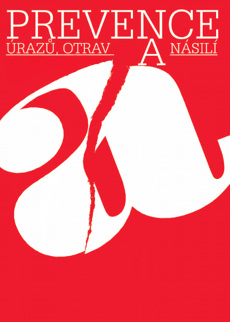LONGITUDINÁLNÍ SLEDOVÁNÍ ÚRAZŮ V MUŽSKÉ POPULACI – DLOUHODOBÝ SKLON K ÚRAZŮM
LONGITUDINAL MONITORING OF INJURIES IN MALE POPULATION – LONG-TERM TENDENCY TO INJURIES
Lubomír Kukla1, 2, Marie Bouchalová2
1Jihočeská univerzita v Českých Budějovicích, Zdravotně sociální fakulta, katedra klinických
a preklinických oborů;
2Lékařská fakulta MU Brno, Výzkumné pracoviště preventivní a sociální pediatrie
Korespondenční autor: Lubomír Kukla (lubomir.kukla@tiscali.cz)
ISSN 1804-7858 (On-line)
Full verze:
Submitted:21. 11. 2011
Accepted: 3. 5. 2012
Published online: 29. 6. 2012
Summary
From the population of 3580 fathers, who provided data on injuries from the birth of their children (aged on average 27.7 years), 2255 of them also submitted the second set of data from a period of next five years.
The morbidity associated with these injuries was considered based on causes (17 and 25 causes in the first and second periods, respectively) of individual injuries, incidence per 100 men and treatment environment (hospital, outpatient department, solely at home).
Total of 2016 fathers formed a longitudinal cohort with data from both periods; the remaining ones formed an alternative group.
The whole group of the fathers was divided by the occurrence of injuries into categories as follows: without injuries, with low injury frequency, intermediate injury frequency and high injury frequency. The incidences of particular causes of injuries from one category to the other increased at different rates, which was expressed by the relative risk (RR) based on the category of fathers with the low injury frequency. Due to unequal distribution of causes between the categories, the structure of injury causes was different between fathers with different levels of the injury frequency.
In the longitudinal cohort and alternative group, the structure of causes of injuries was different in fathers with intermediate and high injury frequencies compared to fathers with the low injury frequency.
The frequency of injuries of fathers in the second period was studied in a similar manner as in the first period. Numbers of injuries from the second period, assigned to categories of their previous injury frequency, were directly graded in accordance with their previous injury history as follows: RR = 1 – 1.19 – 1.75 – 2.48 (p<0.000); thus, there was a strong and long-term tendency to similar injury frequencies in the male population.
Keywords: longitudinal cohort – injury incidence – structure of injury frequency – tendency to experiencing injury – men at reproductive age.
Souhrn
Z populace 3 580 otců, kteří podali údaj o úrazech do narození svých dětí (průměrný věk 27,7 let), podalo ještě 2 255 i druhý údaj za dalších pět let.
Jejich úrazová morbidita je sledována podle příčin (v prvním období 17, ve druhém 25) individuálních počtů úrazů, incidencí na 100 mužů a místa léčení (nemocnice, ambulance, jen doma).
Dva tisíce šestnáct otců vytvořilo longitudinální kohortu s údaji z obou období, ostatní tvoří skupinu alternativní.
Celý soubor otců byl rozdělen podle počtu úrazů do kategorií bez úrazu, s úrazovostí nízkou, střední a vysokou. Incidence jednotlivých příčin úrazů se od jedné kategorie ke druhé zvyšovaly různým tempem, což vyjadřují relativní rizika (RR) se základem v kategorii otců s nízkou úrazovostí. V důsledku nestejného rozložení příčin mezi kategoriemi se struktura příčin úrazů mezi otci s různě vysokou úrazovostí lišila.
I v longitudinální kohortě a v alternativní skupině bylo složení příčin úrazů jiné u otců se střední a s vysokou úrazovostí než u otců s úrazovostí nízkou.
Úrazovost otců ve druhém období byla studována podobně jako v prvním. Počty úrazů z druhého období, přiřazené do kategorií jejich minulé úrazovosti, byly přímo odstupňované podle velikosti jejich předchozího úrazového postižení, RR = 1 – 1,19 – 1,75 – 2,48 (p<0,000): tendence k podobné úrazovosti je v mužské populaci silná a dlouhodobá.
Klíčová slova: longitudinální kohorta – incidence úrazů – struktura úrazovosti – sklon k úrazovosti – muži v reprodukčním věku
Literatura
- Bouchalová M, Kukla L (1994). Úrazovost v dětství. Čs. pediatrie, Praha, 49/3: 176–181.
- Brook U, Heim M (1997). Accidents among high school pupils in Israel: a recurrent disease? Patient Education and Counselling, Elsevier, 31: 237–242.
- Grivna M (2003). Epidemiologie a prevence dětských úrazů. In Grivna M et al.: Dětské úrazy a možnosti jejich prevence. 1. vydání. Praha, Centrum úrazové prevence UK 2. LF a FN Motol, s. 9–23.
- Kukla L (2006). Úrazová morbidita rodičovské generace za prvních pět let života jejich dětí. In: Kukla L: Úrazy jako příčina somatických, psychosociálních a socioekonomických problémů (následků) postižených. Habilitační práce, Brno, s. 127–188.
- Kukla L, Bouchalová M (2008). Asociace v úrazovosti žen mezi dvěma životními obdobími – epidemiologická studie. Prevence úrazů, otrav a násilí. IV/1: 7–18.
- Kukla L, Bouchalová M, Golding J (1996). Injuries and accidents in childhood. In: Dragonas T, Golding J, Ignatjeva R, Prokhorskas R et al.: Pregnancy in the 90s. Bristol, Sansom and Company, p. 26–31.
- Manciaux M, Romer JC (eds.) (1991). Accidents in childhood and adolecence. The role of research. Ženeva: WHO, s. 216.
- O’Connor TG, Davies L, Dunn J, Golding J, the ALSPAC Study Team (2000). Distribution of accidents, injuries and illnesses by family type. Pediatrics. 106/5: 1–6.
- Pool GV, Griswald JA, Thagghard K, Rhodes RS (1989). Trauma is a recurrent disease. J. Trauma. 29: 940–947.
- ÚZIS (2002). Úrazy v ČR v letech 1995–2000. Aktuální informace č. 25, Praha, s. 1–8.
- Wazana A (1997). Are there injury-prone children? A critical review of the literature. Can. J. Psychiatry. 42/6: 602–610.
